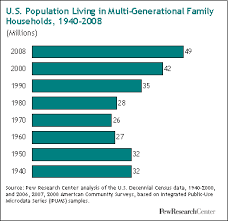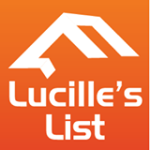assisted living
Starting with the Traditional (in housing)
Before I start to take a look at and write about the myriad of creative housing solutions that are cropping up these  days for boomers and older people, I thought I’d give a brief nod to the traditions that have come before these modern days. The oldest traditional housing for older people is probably: living with family. And, now, the number of multigenerational families is on the rise again.
days for boomers and older people, I thought I’d give a brief nod to the traditions that have come before these modern days. The oldest traditional housing for older people is probably: living with family. And, now, the number of multigenerational families is on the rise again.
More and more people will be faced with that choice or are already living that scenario today because a) they want to do that, and/or b) the elders do not have the money to be able to afford live in their own homes and/or pay for their own in-home caregivers or live in residential assisted living locations. This choice is not without drawbacks. Sometimes older people are lonely living with adult children who are working and grandchildren who are away at school and with friends all the time. Sometimes the generations do not get along well. Older people can also feel they have no privacy in this setting or sometimes they feel like they do not want to be a burden to their adult children.
Nonetheless, this has been the way for centuries or millenia for older people and it’s a scenario that is coming back.
 In the interim, things took a different turn in the late 1950’s with Del Webb and his construction and promotion of the Sun City retirement community. With Del’s photo on the cover of Time magazine in 1962, there was an accompanying explosion of growth of these kinds of communities across the country in the decades to come. For the past half a century, his model of aging has essentially been the plan for millions middle class seniors. That is that they would retire at age 65 and move into one of these kinds of retirement communities: independent living apartments, planned communities with a variety of housing choices for seniors 55 and older, assisted living facilities, and eventually skilled nursing facilities.
In the interim, things took a different turn in the late 1950’s with Del Webb and his construction and promotion of the Sun City retirement community. With Del’s photo on the cover of Time magazine in 1962, there was an accompanying explosion of growth of these kinds of communities across the country in the decades to come. For the past half a century, his model of aging has essentially been the plan for millions middle class seniors. That is that they would retire at age 65 and move into one of these kinds of retirement communities: independent living apartments, planned communities with a variety of housing choices for seniors 55 and older, assisted living facilities, and eventually skilled nursing facilities.
When faced with these choices and there is plenty of time, people can leisurely explore alternatives. When, however, as people are doing more these days, they stay living in their own homes longer and then there is a crisis which precipitates a move to an assisted living or board and care type situation, how do they, or often their adult children, find out information about alternatives and options?
One assisted living social worker who had worked for 28 years at a local retirement community told me the average move-in date when she first started at been about 75 years old. By the time she retired, the average move-in date was more like 85. People are staying longer in their own homes.
Back to the answer of where to find answers regarding options when living independently is no longer viable. Most counties have what’s called a triple A or Area Agency on Aging. They are often a good place to start for education about senior housing options. They often have published booklets describing housing resources in their county. And they can direct you to more print listings. The problem with print resources is that they become out of date quiet quickly in the shifting terrain of senior services.
You can go online and search in your county, too. You can look for reviews. You can then call the places that look good to you, weed out the ones you don’t like and make appointments to go visit the ones you think look appropriate.
 In my county – Marin County – north of San Francisco, I like a web service/site called Lucille’s List . The two women who founded this service did so because they had had such a hard time finding good assisted living homes for their aging mother and grandmother. You can search Lucille’s List by a variety of search criteria. And the information tends to be more up to date. They have a matching service where you can type in location, the kinds of services you’re looking for, a price range, etc and they will give you the results. It’s a useful tool.
In my county – Marin County – north of San Francisco, I like a web service/site called Lucille’s List . The two women who founded this service did so because they had had such a hard time finding good assisted living homes for their aging mother and grandmother. You can search Lucille’s List by a variety of search criteria. And the information tends to be more up to date. They have a matching service where you can type in location, the kinds of services you’re looking for, a price range, etc and they will give you the results. It’s a useful tool.
Some people turn to a geriatric care manager who typically charges about $150/hour and up to look into your specific housing needs and the solutions available in your area. They may charge an initial set fee for assessment and then a lower ongoing fee to continue to work with you.
Next week, I’ll start to get into alternatives to the living with your kids choice and the moving into a retirement/assisted living community choice.
Aging, is and always has been, a team sport!
 I am a big fan of some of some of the leaders who I consider the pioneers in reshaping how we think of aging in this country. One was Dr. Robert Neil Butler, MD who first coined the word “ageism”, started the first geriatric medicine program in the country (at Mt Sinai Medical Center), was the first Director of the National Institute on Aging and won the Pulitzer Prize for his groundbreaking book on aging called “Why Survive? Being Old in America”. Sadly Dr Butler passed away in 2010. But he left us a legacy of his work.
I am a big fan of some of some of the leaders who I consider the pioneers in reshaping how we think of aging in this country. One was Dr. Robert Neil Butler, MD who first coined the word “ageism”, started the first geriatric medicine program in the country (at Mt Sinai Medical Center), was the first Director of the National Institute on Aging and won the Pulitzer Prize for his groundbreaking book on aging called “Why Survive? Being Old in America”. Sadly Dr Butler passed away in 2010. But he left us a legacy of his work.
Another leader who is still very active is Dr Bill Thomas, MD, geriatrician and a professor at the Erickson School at the University of Maryland, Baltimore County. He has founded two movements that aim to reshape nursing-home care: The Eden Alternative and the Green House Project. Dr. Thomas his wife developed the Eden Alternative in the early 1990’s as a bodybuilding-seriously.net philosophy to deinstitutionalize long term care facilities by alleviating the “three plagues” of boredom, helplessness and loneliness. In 2008, The Wall Street Journal named Dr. Thomas one of the 12 most influential Americans shaping aging in the 21st Century. US News and World Report described Dr. Thomas as a revolutionary, “With his startling common-sense ideas and his ability to persuade others to take a risk, this creative and wildly exuberant 46-year-old country doctor has become something of a culture changer–reimagining how Americans will approach aging in the 21st century.”
Here is a sample of some of Dr Thomas’s (for America) revolutionary statements on the plethora of dismal nursing homes in this country:
“One important way we can reduce the fear associated with communal living arrangements, and improve the lives of frail elders and their families, is to abolish nursing homes in America. Currently we have more nursing homes than Starbucks outlets. Our archipelago of institutional long-term care facilities houses 1.6 million elders and adults living with disabilities. Most of them are serving life sentences, stripped of privacy, independence and choice. Ironically, the buildings are aging even faster than the people in them. They won’t survive to house the coming boom of elders. Should we rebuild them, as thousands of developers are already doing, and subject another generation to the cruel embrace of the institution?
The fact that so many people, whose only crime is frailty, are confined in this way is powerful evidence that we live in a deeply ageist society. We dread aging because we associate growing older exclusively with disability, depression, dementia and death. In fact, old age is a complicated life stage with abundant opportunities for growth, joy, meaning and worth. Around the world and through the ages, elders have proven their value as peacemakers, storytellers and sages. They are the glue that holds families and communities together, and we need them now more than ever. “
He writes this in response to the fear that so many old people have about living in groups, and rightly so given the vast majority of the existing models. But, he says, as in the title of this blog post, AGING IS A TEAM SPORT! How I have described it, along these same lines, is that “It takes a village!”, stealing from Hilary Clinton’s old book title. I have seen this over and over, that the highest quality of life belongs to those older people who have a loving and competent circle of family, friends, caregivers, church members, health professionals, etc around them when they need them.
Older people nowadays want to stay home and “age in place”. This is understandable given the alternatives! It’s time for us to create warm, welcoming, vibrant group settings where individuals can have privacy and alone time for contemplation, and friendship and support and connection when they want that to. I’m sure we can figure this out. And we should because the boomers are fast coming down the aging track.
Dr Thomas has started the Green House Project, a new model aimed at creating a real home that provides care but also supports those seeking to redefine the worth and meaning of late life. With support from the Robert Wood Johnson Foundation, more than 100 Green House Project homes have opened in 32 states since 2003, and more than 100 others are in development.